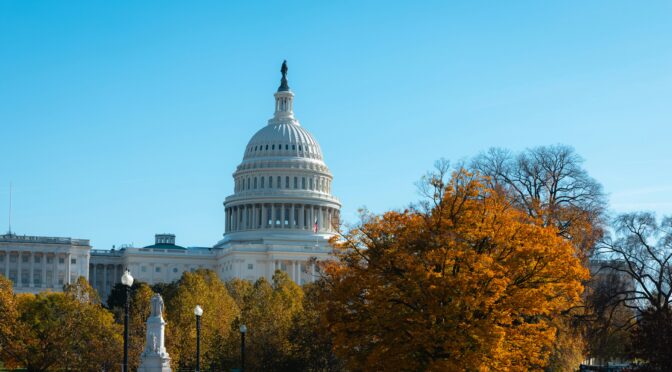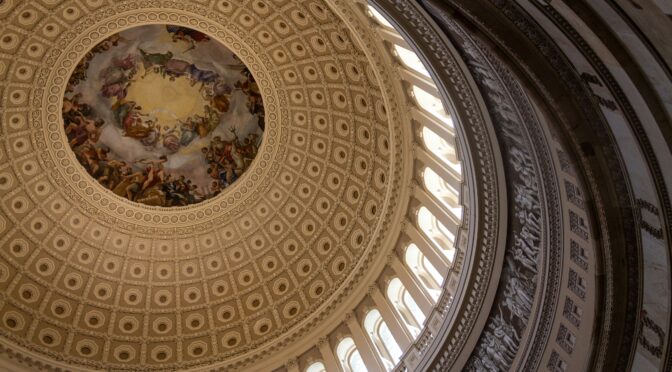By Sean Robins, NACAC’s director of advocacy
Welcome to this issue of the Advocacy Update on NACAC’s Admitted blog. The longest federal government shutdown in U.S. history has finally come to a close after 43 days, ending a period marked by uncertainty, disruption, and strain across the nation. As institutions, students, and college admission counselors begin to navigate the uneven path toward recovery, federal agencies are reopening, policy debates are resuming, and courts and Congress are shaping the landscape in real time. This moment underscores just how closely access to education is tied to the stability and functionality of government — and why continued vigilance, advocacy, and clear-eyed policy engagement remain essential to protecting students and the professionals who support them.
Policy & Legislative Updates
The higher education sector continues to feel the strain of the record 43-day federal shutdown, with disruptions touching nearly every corner of campus operations and student life. Institutions are reporting significant delays in research activity and grant spending, with universities like North Carolina State freezing federal grant expenditures as interruptions surpass $25 million per month. Students and families are facing widening hardship as partial cuts to SNAP benefits deepen food insecurity for more than one million college students, while military-affiliated students encounter delays in tuition assistance and GI Bill payments. Adjunct faculty are also seeing health care costs rise as federal subsidies stall. Across higher education, many describe this moment as one of “cumulative exhaustion.”
Several court decisions offered temporary relief for families while underscoring the instability surrounding federal programs during the shutdown. A federal judge ordered the administration to restore full SNAP benefits for the 42 million people who rely on the program, finding that officials deliberately withheld available funds for political reasons. The First Circuit then blocked an additional attempt to halt benefits, following an earlier administrative stay issued by Supreme Court Justice Ketanji Brown Jackson, who temporarily paused lower court orders to allow for further review. The Supreme Court extended that stay through the end of Nov. 13. Now that the bipartisan agreement to reopen the government includes the full Fiscal Year 2026 SNAP budget, the status of the lawsuit is uncertain; it may ultimately be dismissed as moot because SNAP recipients will, eventually, receive their missing November benefits.
Congress, meanwhile, has begun to reengage issues beyond the shutdown. Following passage of OBBBA, lawmakers are turning their attention to transparency in college cost information. At a Senate HELP Committee hearing, members from both parties emphasized the need for program-level clarity on price and outcomes. While Republicans framed transparency as central to understanding return on investment, Democratic witnesses highlighted the broader affordability crisis — driven by rising living expenses — that transparency alone cannot solve. Proposals ranged from improving the College Scorecard to standardizing financial aid offers and advancing the bipartisan College Transparency Act.
As funding negotiations slowly progressed, the Senate advanced a bipartisan agreement to end the shutdown. The package will provide full-year appropriations for the Departments of Veterans Affairs and Agriculture and the legislative branch while funding all other agencies under a continuing resolution through Jan. 30. The deal guarantees back pay for more than one million federal employees, temporarily blocks new layoffs, and restores thousands of positions eliminated during the shutdown. Although most Democrats opposed the measure for failing to extend expiring Affordable Care Act premium subsidies — the issue central to the standoff — enough supported the agreement for it to move forward. The legislation passed in the Senate 60-40 on Nov. 10 and passed in the House of Representatives 222-209 on Nov. 12; the president signed the bill into law following passage in the House.
Courts also weighed in on the administration’s internal operations. A federal judge ordered the Education Department to remove partisan language inserted into furloughed employees’ out-of-office messages, finding that the administration had “commandeered” employee email accounts to advance political messaging during the shutdown. The ruling permanently bars the department from inserting partisan content into automated emails and reinforces the longstanding principle of civil-service neutrality.
Beyond the shutdown, universities continue to navigate shifting administrative policies. Cornell University reached a $60 million agreement with the administration that restores more than $1 billion in frozen federal research dollars while explicitly preserving the institution’s autonomy. The settlement requires only limited federal reporting, making Cornell the fifth institution to strike such a deal as the administration continues pursuing investigations and policy changes aimed at reshaping higher education and dismantling diversity, equity, and inclusion structures.
Even as universities respond to these federal actions, states are beginning to consider their own roles in safeguarding civil rights. With the Education Department’s Office for Civil Rights significantly weakened through layoffs, regional office closures, and a narrowed enforcement scope, some states — such as Pennsylvania — are weighing the creation of state-level civil rights offices to fill the gap. Advocates caution that a state-by-state approach risks creating uneven protections for students nationwide.
Enrollment trends continue to evolve amid this uncertainty. New data from the National Student Clearinghouse Research Center show overall enrollment up 2 percent this fall, with community colleges leading growth at 4 percent and the largest increases occurring among students pursuing short-term credentials and associate degrees. Graduate enrollment held flat. The data also highlight a growing racial-reporting gap, with a 45 percent rise since 2023 in students not disclosing their race — complicating efforts to monitor demographic shifts.
At the same time, the Education Department is redirecting nearly all $171 million in Fund for the Improvement of Postsecondary Education (FIPSE) funding from congressionally intended student success and access programs toward administrative priorities such as artificial intelligence, civil discourse, accreditation reform, and short-term workforce training. Stakeholders warn that this shift sidesteps legislative intent, puts pressure on institutions serving rural, veteran, and low-income students, and may be difficult to implement given staff shortages and tight timelines.
In a notable departure from earlier policy positions, Trump recently defended the presence of international students in U.S. higher education, calling them “good” for America’s colleges and cautioning that enrollment cuts would devastate institutions financially — especially HBCUs. The comments contrast sharply with prior administrative actions that restricted visas and imposed heightened requirements for international students, highlighting tension between political messaging and the economic realities facing colleges.
With the shutdown now officially over following House passage of a short-term funding bill, agencies are moving to resume operations, though major policy disputes remain unresolved. The agreement restores pay for federal workers and allows institutions to continue accessing core student aid services, but uncertainty persists around whether the Education Department will comply with provisions reversing recent layoffs. Many expect additional oversight challenges in the weeks ahead.
Meanwhile, legal challenges continue in states seeking to end in-state tuition benefits for undocumented students. Courts in Texas and Oklahoma have already struck down tuition-equity policies, tripling costs for some students with little warning. Similar efforts are underway in Kentucky, Illinois, and Minnesota. Civil rights advocates, including the Mexican American Legal Defense and Educational Fund (MALDEF), are pushing to reopen these cases, arguing that affected students were denied due process. NACAC joined an amicus brief led by the Presidents’ Alliance urging the Fifth Circuit to ensure students have the opportunity to be heard.
Finally, the administration has released a revised proposal to expand IPEDS admissions reporting. The updated draft narrows the scope to four-year institutions with selective admissions and requires six years of disaggregated application and admissions data, including test scores, GPA, Pell eligibility, income, and parental education levels. Community colleges and open-enrollment institutions awarding aid solely based on need are no longer included. While this reduces the burden on open-access institutions, significant concerns remain. NACAC’s previous public comment called for greater clarity, stronger privacy protections, and safeguards against misuse of admissions data. The revised proposal is now open for a 30-day public comment period.
NACAC Advocacy
This week, NACAC continued to elevate the concerns of our members and the students they serve as federal actions and policy shifts create new challenges across the education landscape. In meetings with congressional staff, I underscored the urgent need to protect equitable pathways to postsecondary education — particularly as institutions navigate the aftermath of the shutdown, ongoing legal battles, and emerging federal proposals that could reshape college access.
These conversations focused on the concrete impacts that recent federal actions are having on students, college admission counselors, and institutions, including rising instability in student aid programs and the growing strain on low-income and first-generation students. I emphasized the foundational principle that public education is a public good, and that federal policy must reinforce — rather than erode — the systems that allow individuals to move toward opportunity.
NACAC also discussed introducing legislation aimed at strengthening college access, supporting students and families through clear admission processes and policies, and reinforcing pathways that help individuals enter and remain in mission-driven careers through the Public Service Loan Forgiveness program. Across each meeting, our message was consistent: students deserve an accessible, stable, and equitable system, and NACAC will continue to push for federal policies that uphold those values.
Ways You Can Take Action
We are continuously updating our Take Action page with opportunities to make your voice heard. If you have not already, I encourage you to advocate on the urgent issues below. You can also view all active advocacy campaigns in the yellow column of the Take Action page.
- Tell Congress: Protect FSEOG and Work-Study Funding
- Tell Congress: Save TRIO and Support College Access
- Tell Congress: Prioritize Visa Appointments for International Students and Scholars
- Urge Congress to Protect Postsecondary Pathways
- Tell Congress: International Students are Essential to America’s Safety, Economy, and Global Strength
- Tell Congress to Not Abandon Our National Commitment to Education
- Urge Congress to Protect Disabled Students
- Don’t Flunk the Future Advocacy Toolkit
As federal operations resume and policymakers turn toward the work ahead, this moment calls for both persistence and a clear commitment to progress. The past 43 days underscored how quickly uncertainty can ripple through classrooms, campuses, and communities — but they also revealed the resilience of the professionals who remain steadfast in their support of students. NACAC will continue to advocate for policies that strengthen pathways to opportunity and reinforce the systems that allow students to move forward with confidence, clarity, and stability.
In the spirit of that work, I am reminded of the words of educator and civil rights advocate Marian Wright Edelman: “Education is for improving the lives of others and for leaving your community and world better than you found it.”
As we look ahead, we carry that charge with us — advancing progress step by step, and persevering on behalf of the students and counselors who depend on it.













